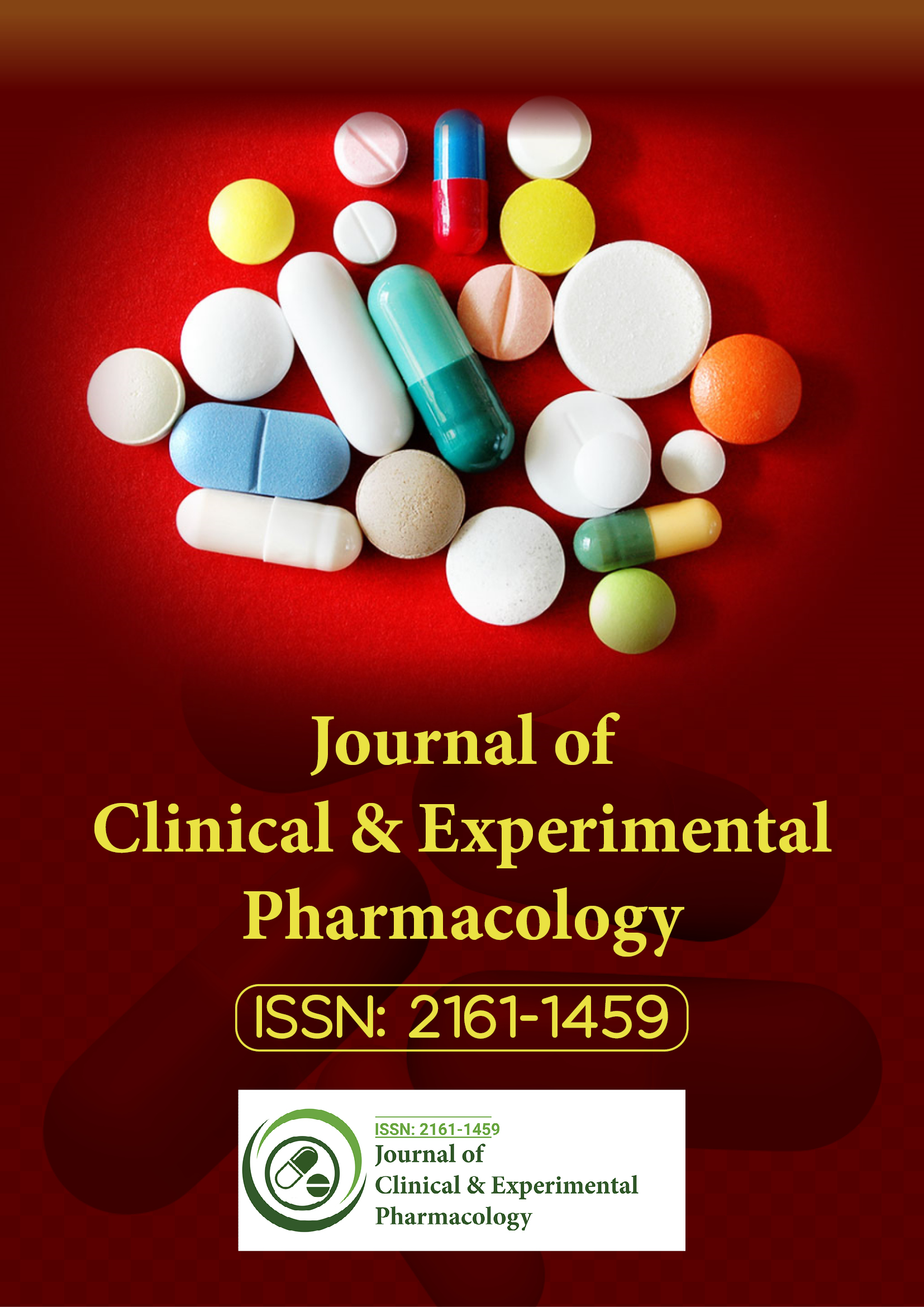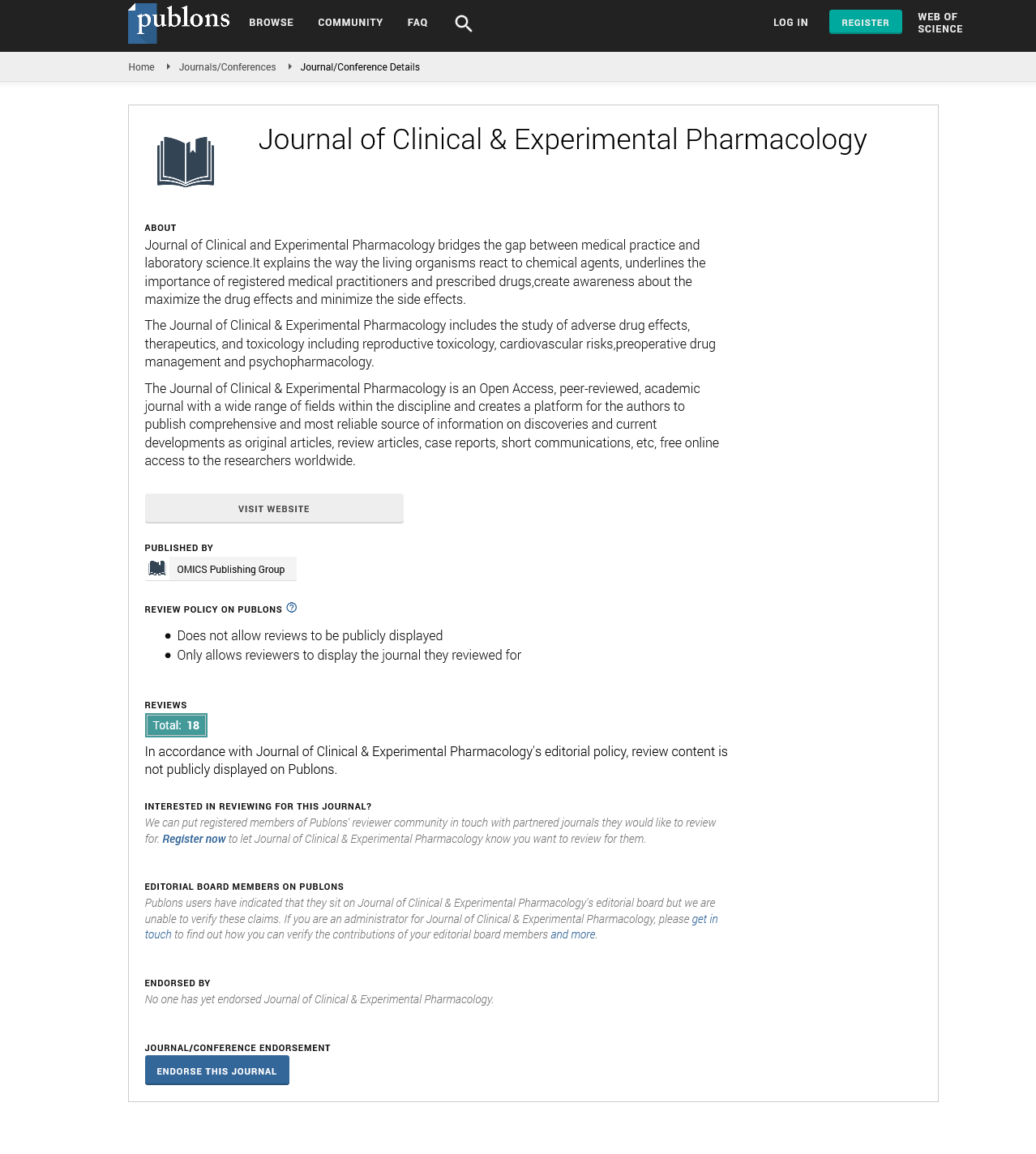Indexed In
- Open J Gate
- Genamics JournalSeek
- China National Knowledge Infrastructure (CNKI)
- Ulrich's Periodicals Directory
- RefSeek
- Hamdard University
- EBSCO A-Z
- OCLC- WorldCat
- Publons
- Google Scholar
Useful Links
Share This Page
Journal Flyer

Open Access Journals
- Agri and Aquaculture
- Biochemistry
- Bioinformatics & Systems Biology
- Business & Management
- Chemistry
- Clinical Sciences
- Engineering
- Food & Nutrition
- General Science
- Genetics & Molecular Biology
- Immunology & Microbiology
- Medical Sciences
- Neuroscience & Psychology
- Nursing & Health Care
- Pharmaceutical Sciences
Perspective - (2025) Volume 15, Issue 2
Neuropharmacology in the Treatment of Neurological and Psychiatric Disorders: Mechanisms and Therapeutic Approaches
John Paul*Received: 24-Mar-2025, Manuscript No. CPECR-25-28865; Editor assigned: 26-Mar-2025, Pre QC No. CPECR-25-28865 (PQ); Reviewed: 10-Apr-2025, QC No. CPECR-25-28865; Revised: 18-Apr-2025, Manuscript No. CPECR-25-28865 (R); Published: 25-Apr-2025, DOI: 10.35248/2161-1459.25.15.475
Description
Neuropharmacology is a branch of neuroscience and pharmacology focused on how drugs affect the nervous system. It investigates the influence of chemical agents on neuronal function and how these agents can be used to treat neurological and psychiatric disorders. The field encompasses both basic research, such as synaptic transmission and receptor pharmacodynamics and clinical applications, including drug development and therapeutic interventions. As the global burden of neurological conditions continues to grow, neuropharmacology has become increasingly important in understanding disease mechanisms and identifying potential treatments for disorders such as depression, epilepsy, Parkinson’s disease, Alzheimer’s disease, schizophrenia and chronic pain.
Divisions of neuropharmacology
Neuropharmacology is broadly divided into two main areas:
Behavioral neuropharmacology: It focuses on how drugs affect behavior, mood, cognition and mental health. It plays a major role in the study of psychiatric illnesses and substance abuse.
Molecular and cellular neuropharmacology: It deals with the interaction of drugs with receptors, ion channels, neurotransmitter systems and intracellular signaling pathways. It explores mechanisms underlying neuronal communication and how drugs can modulate these processes.
Together, these subfields offer a comprehensive approach to studying how chemical compounds influence nervous system function from the molecular to behavioral level.
Neurotransmitters and drug targets
Neurotransmitters are chemical messengers that transmit signals across synapses between neurons. Major neurotransmitter systems targeted by neuropharmacological agents include:
Dopaminergic system: Involved in reward, motivation, motor control and cognition. Dysregulation is linked to Parkinson’s disease and schizophrenia. Drugs like L-DOPA and antipsychotics act on dopamine receptors or influence dopamine synthesis.
Serotonergic system: Regulates mood, sleep and appetite. Serotonin Reuptake Inhibitors (SSRIs) are commonly used to treat depression and anxiety.
GABAergic system: Gamma-Aminobutyric Acid (GABA) is the main inhibitory neurotransmitter. GABAergic drugs, such as benzodiazepines and barbiturates, are used for anxiety, epilepsy and sleep disorders.
Glutamatergic system: Glutamate is the principal excitatory neurotransmitter. Abnormal glutamatergic activity is associated with neurodegenerative diseases and psychiatric disorders.
Cholinergic system: Acetylcholine is involved in attention, learning and memory. Cholinesterase inhibitors are used to manage Alzheimer’s disease by enhancing cholinergic transmission.
Drug classes and mechanisms
Neuropharmacological agents can be classified based on their action on the nervous system:
Agonists and antagonists: Agonists activate receptors to mimic neurotransmitter effects, while antagonists block receptor activity. For instance, morphine is an opioid receptor agonist, whereas naloxone is an antagonist used to reverse opioid overdose.
Reuptake inhibitors: These drugs prevent the reabsorption of neurotransmitters into presynaptic neurons, increasing their availability in the synaptic cleft. SSRIs are an example.
Enzyme inhibitors: These agents inhibit enzymes that degrade neurotransmitters. Monoamine Oxidase Inhibitors (MAOIs), used in depression, prevent the breakdown of serotonin, dopamine and norepinephrine.
Ion channel modulators: Some drugs affect ion channel function, altering neuronal excitability. Anticonvulsants such as phenytoin stabilize neuronal membranes by targeting sodium channels.
Therapeutic applications
Neuropharmacology has led to the development of treatments for a wide range of neurological and psychiatric disorders:
Depression and anxiety: Pharmacological management often includes SSRIs, Serotonin-Norepinephrine Reuptake Inhibitors (SNRIs) and benzodiazepines. These drugs alter neurotransmitter levels to improve mood and reduce anxiety symptoms.
Schizophrenia: Antipsychotic medications act mainly on dopamine receptors to control hallucinations and delusions. Second-generation antipsychotics have improved side effect profiles compared to earlier drugs.
Parkinson’s disease: L-DOPA remains the primary treatment by replenishing dopamine levels. Other drugs include dopamine agonists and MAO-B inhibitors.
Alzheimer’s disease: Cholinesterase inhibitors and NMDA receptor antagonists are prescribed to support cognitive function, though they do not halt disease progression.
Epilepsy: Antiepileptic drugs work by enhancing inhibitory signals or suppressing excitatory activity to control seizures.
Chronic pain: Drugs such as opioids, antidepressants and anticonvulsants are used for neuropathic pain management.
Current research and trends
Recent research in neuropharmacology focuses on more targeted therapies and personalized medicine. Advancements include:
Neuroinflammation modulation: Chronic inflammation in the brain is increasingly recognized in disorders like multiple sclerosis and depression. Drugs targeting inflammatory pathways are under investigation.
Neuroplasticity enhancement: Agents that support synaptic growth and repair are being explored for neurodegenerative conditions.
Cannabinoid pharmacology: The endocannabinoid system has gained attention in managing pain, epilepsy and anxiety. Synthetic and plant-derived cannabinoids are under clinical study.
Gene and cell-based therapies: New strategies aim to modify gene expression or introduce therapeutic cells to restore function in damaged neural circuits.
Blood-brain barrier penetration: One challenge in drug delivery is crossing the blood-brain barrier. Nanotechnology and drug-carrier systems are being developed to improve central nervous system access.
Conclusion
Neuropharmacology bridges molecular biology, pharmacology and neuroscience to explore how drugs influence brain function. Through understanding receptor mechanisms, neurotransmitter systems and cellular processes, this field has contributed to the treatment of a wide range of disorders. Ongoing research continues to uncover new targets and refine therapeutic strategies, enhancing our ability to manage diseases of the nervous system more effectively.
Citation: Paul J (2025). Neuropharmacology in the Treatment of Neurological and Psychiatric Disorders: Mechanisms and Therapeutic Approaches. J Clin Exp Pharmacol. 15:475.
Copyright: © 2025 Paul J. This is an open-access article distributed under the terms of the Creative Commons Attribution License, which permits unrestricted use, distribution and reproduction in any medium, provided the original author and source are credited.

